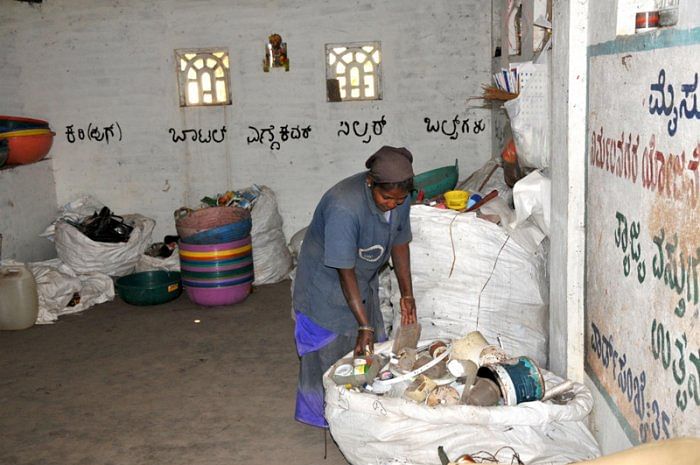
A fallacy smacked me in the face in the run-up to Diwali.
I was glad to discover that a Bengaluru-based platform collects stuff (everything from toys, clothes and kitchen items) at the doorstep on behalf of non-profit organisations; the non-profits then repurpose or reuse the collected items. The platform offers the collection service for a small fee. My excitement, however, dissolved at the thought of having to pay to dispose of old items. But within minutes, I began to understand that what I had thus far been considering ‘charitable behaviour’ i.e. giving away old items for the benefit of others, was not charitable in the least. To the contrary, it was a full-blown business operation involving strategy, logistics, effort, resources and time. Besides, it was solving a very real problem: Taking care of excessive, unused or unusable stuff in a responsible manner – something that I’ve scarcely paid heed to.
A few days later, I learnt of an online grocery service that delivers staples in packaging that can be returned for reuse. The e-tailer incentivises returns of these packaging items, such as newspapers and glass jars, by awarding redeemable points to users.
Both the incidents drove home the significance of being responsible about disposing off stuff we no longer need, use or want. If we take a second look at the items we add to our trash cans, it’ll be easy to understand why landfills in our cities are reaching for the skies. These mountains of trash – be it Ghazipur in Delhi, Deonar in Mumbai or Mandur/Mavallipura in Bengaluru – are an environmental disaster. These pollute our land, water and air. It isn’t the municipal workers’ or solid waste management contractors’ job to clear this mess. The onus is on each one of us.
As consumers, we need to examine what and how much trash we generate. This starts with what and how much we consume. The key is to transition to a lifestyle of ‘conscious consumption’ – make the distinction between what we need vis-à-vis what we desire. (Note to self: Don’t fall for that marketing gimmick to ‘upgrade’ to the latest smartphone or buy two pairs of jeans for the price of one.) It also entails examining if we’ve exhausted all utility for an item before we discard it. If not, then perhaps it isn’t the best time to junk it.
One obstacle in doing this lies in how things are intrinsically made. Many goods, especially electricals, gadgets and even cars, are built on the principle of planned obsolescence i.e. manufacturers may artificially limit the lifetime of products in order to get repeat/quicker sales. This feeds the buy-use-throw-repeat cycle and is a compelling reason to make retailers, producers/manufacturers the primary stakeholders in solving the scourge of waste disposal. If behemoths like Apple and Amazon can spend millions to achieve the best user experience and efficient logistics in their path to maximum profitability, then surely they can master the art of backward inventory management to dispose off the very products they peddle.
This is not a novel idea. The concept of extended producer responsibility (ERP) – which envisages decreased the environmental impact of a product, by making the manufacturer responsible for its life-cycle and especially for its take-back, recycling and final disposal – was first introduced in 1990. Another model that is gaining popularity is that of closed-loop or circular economy, which aims to reuse-recycle-recover products by keeping waste to the bare minimum. Many countries, including South Korea, Taiwan, Japan, Germany, Switzerland and Sweden have embraced these ideas, especially for Waste Electrical and Electronic Equipment (WEEE). These nations foresaw the challenges posed by the disposal of phones, ovens, refrigerators and so on, and tasked the producers to play a part in their safe disposal. For instance, in South Korea, manufacturers and distributors of electronics and electricals are obliged to meet recycling targets under the ERP system. Recycling costs are imposed if they fail to meet these targets. This is in addition to a volume-based waste fee system for industry and households.
These measures have led South Korea to recycle 53.7% of its waste, the second-highest in the world after Germany. The Asian leader is now striving for a 3% landfill and 87% recycling rate by 2025. It’s not that the South Koreans became recycling champions overnight. The country’s achievement is an outcome of a healthy mix of legislation, directives and public education over decades. Moreover, there are supplementary benefits like investments in the recycling industry, new technologies and materials science. It’s unlikely that these industries would’ve come up or thrived had the state not intervened to push producers to clean up the mess. As consumers, we are equally complicit. No cost is too high to save the planet. We must play a part.
(Marisha Karwa is an independent writer)
The views expressed above are the author's own. They do not necessarily reflect the views of DH.